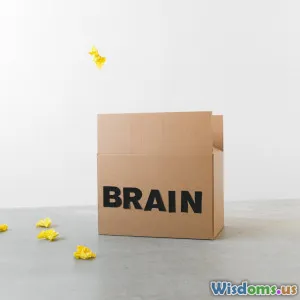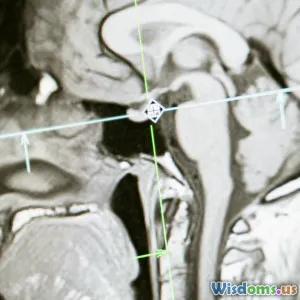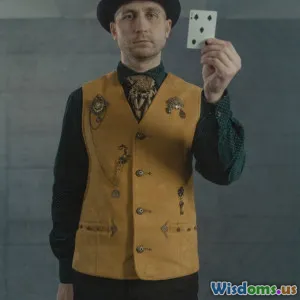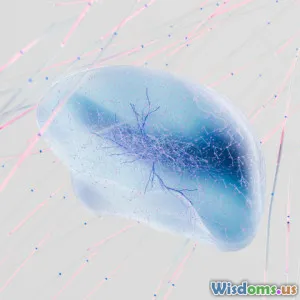
Predicting Creativity Are Vivid Dreamers Wired Differently
9 min read Explore how vivid dreamers may possess unique brain wiring that predicts creative thinking and innovation. (0 Reviews)
Predicting Creativity: Are Vivid Dreamers Wired Differently?
Imagine waking up from a vivid, colorful dream that sparked a novel idea or a unique perspective for solving a problem. For many individuals, these rich nocturnal experiences—vivid dreams—are more than intriguing mental journeys; they may be windows into exceptional creative potential.
But are people who experience vivid dreams wired differently neurologically? And could this brain wiring predict their creative ability? In this article, we explore the intersection of neuroscience, dreaming, and creativity to understand whether vivid dreamers truly operate on a distinct frequency.
Introduction: The Intersection of Dreams and Creativity
Dreams have captivated human curiosity for millennia—from ancient interpretations as divine messages to modern psychologists’ attempts at decoding subconscious meanings. Recent advances in brain imaging and cognitive science have breathed new life into study of dreams, especially vivid dreaming, characterized by intense sensory detail and emotional engagement.
Creativity—the ability to produce original and valuable ideas—remains a complex trait to decode neurologically. However, multiple strands of research have consistently suggested that creativity involves unique brain patterns, heightened connectivity between certain regions, and perhaps even distinct sleep-related processes.
This raises the tantalizing question: are vivid dreamers, who experience rich and detailed dream content, neurologically predisposed to creative thinking? To answer this, we need to understand what vivid dreaming entails, how creativity works in the brain, and what studies have revealed so far.
The Neuroscience of Vivid Dreaming
What Defines a Vivid Dream?
Vivid dreams are characterized by lifelike sensory experiences that feel strikingly realistic, often accompanied by strong emotions and detailed narratives. Unlike dull or fragmented dream recall, vivid dreams are well-remembered and can include visual, auditory, and tactile sensations.
Research estimates that around 20% of people report dreams as frequently vivid, but this varies widely among individuals and populations. Their occurrence relates to REM (rapid eye movement) sleep, the stage associated with intensive brain activity and emotional processing.
Brain Activity During Vivid Dreams
Functional MRI (fMRI) and EEG studies show that during vivid dreaming,
- The visual cortex activates significantly, explaining the rich imagery.
- The limbic system, including the amygdala and hippocampus, becomes more active, which could underpin the strong emotions and memory components seen in vivid dreams.
- The prefrontal cortex, associated with logic and self-control, is less active, possibly allowing for uninhibited thoughts and bizarre dream narratives.
Such specific brain activations reveal a neurological environment conducive to integrating varied sensory inputs, emotions, and memories—processes that may enable the formation of novel subconscious associations linked to creativity.
Creativity and Brain Wiring: What Does Science Say?
The Creative Brain Network
Creativity is not rooted in one single brain area but rather emerges from complex interactions among various regions:
- The default mode network (DMN), known for mind-wandering and self-referential thought, fosters spontaneous idea generation.
- The executive control network (ECN) helps evaluate and refine ideas logically.
- The salience network filters relevant stimuli and switches between internal and external attention.
Heightened connectivity and balanced interplay between these networks correlate strongly with creative cognition.
Neural Correlates Linked to Creativity
Studies have illuminated several brain features linked to increased creativity:
- Increased white matter integrity in frontal and parietal regions, facilitating smooth communication between creative networks.
- Greater neural flexibility, allowing the brain to switch efficiently between modes of thought.
- Enhanced dopaminergic activity, associated with reward-based motivation and novel idea pursuit.
These characteristics suggest that creative individuals might possess increased cognitive fluidity and unique neural wiring that supports imaginative thinking.
Connecting Vivid Dreaming and Creativity
Evidence from Psychological Research
Several studies have analyzed the trait of vivid dreaming alongside various creativity measures:
- A 2018 survey of university students showed that individuals reporting frequent vivid dreams scored higher on divergent thinking tests—a standard creativity assessment measuring the ability to generate multiple solutions to open-ended problems.
- Artist communities often self-report intense dreaming, and historical anecdotal evidence links dream-inspired breakthroughs to creative geniuses like Salvador Dalí and Mary Shelley.
Neuroimaging Insights
Emerging neuroimaging studies reveal overlapping brain patterns:
- Both vivid dreaming and creative ideation activate networks involved with spontaneous imagery and emotional processing.
- Dreamers exhibit increased connectivity in the DMN, a hallmark of creative thought.
One notable 2020 study by those at the University of Geneva used MRI scans to compare brain structures and functional connectivity between vivid dreamers and non-vivid dreamers. They found that vivid dreamers had greater cortical thickness in areas associated with imagination and memory retrieval, suggesting anatomical differences that could underpin creative potential.
Sleep’s Role in Creativity Enhancement
Sleep, particularly REM phases where vivid dreaming thrives, plays a critical role in consolidating memories and enabling novel associations—the foundations of creativity. Experimental evidence supports that REM sleep fosters the ability to make remote connections, essential for creative problem-solving.
For example, research from Harvard Medical School showed participants deprived of REM sleep performed worse on creativity-related tasks the next day, linking healthy REM sleep—and by extension, robust dreaming—to enhanced creative function.
What Does This Mean for Individuals and Society?
Harnessing Vivid Dreaming for Creative Growth
Understanding the link between vivid dreams and creativity encourages individuals to:
- Practice dream journaling, improving dream recall and enabling conscious analysis or inspiration harvesting.
- Prioritize sleep hygiene to ensure ample REM opportunities, indirectly boosting creative skills.
- Explore mindfulness and lucid dreaming techniques that enhance dream vividness and control.
Dream-inspired creativity supports innovation not just in the arts, but also in technology, science, and business where intuitive leaps often underpin breakthroughs.
Broader Implications for Neuroscience and Psychology
The recognition that vivid dreamers may be wired differently invites deeper inquiry into brain plasticity and cognitive diversity. It prompts:
- Development of individualized creativity training based on neural profiling.
- New therapeutic avenues leveraging dream exploration to stimulate cognition and emotional well-being.
- Appreciation of the subconscious as an untapped resource for problem-solving and creative insight.
Conclusion: A Wired Connection Between Dreams and Creativity
The evidence increasingly points to a meaningful link between vivid dreaming and creativity, anchored in distinct brain wiring and functional connectivity patterns. Vivid dreamers' brains appear to blend sensory richness, emotional resonance, and cognitive flexibility in ways that prime them for creative expression.
Far from mere nocturnal escapism, vivid dreams emerge as vital experiences connected to how the brain innovates and adapts.
For individuals and society, deepening our understanding of this link not only demystifies creativity’s origins but also offers practical pathways to nurture it—through sleep, attention, and the courage to dream vividly.
Unlocking the creative mind may in fact begin with embracing our nightly journeys, highlighting the optimistic truth that the brain’s silent night activity holds keys to our brightest day ideas.
Rate the Post
User Reviews
Popular Posts



















